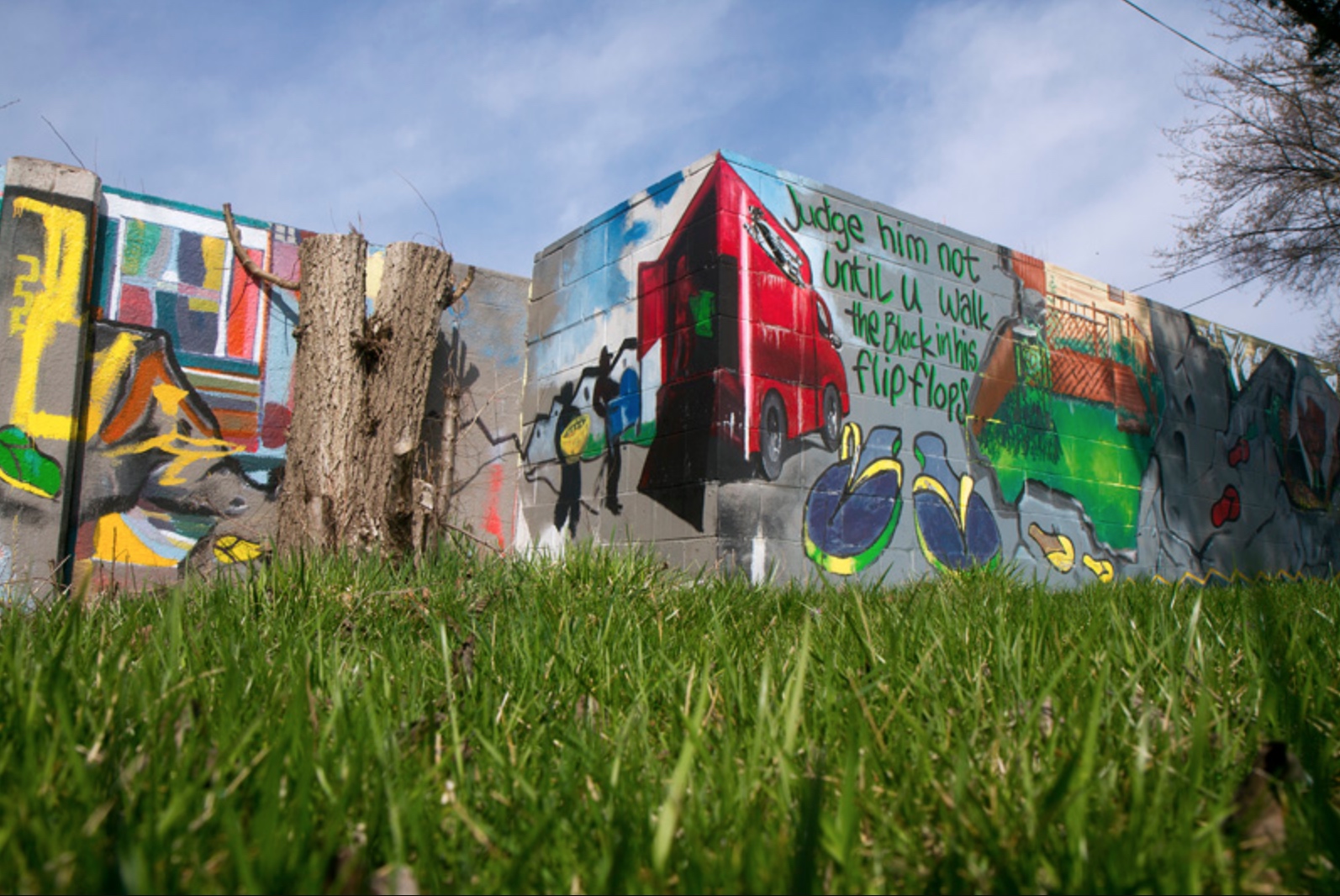The Mystery Behind the Wall
Gallery

Eighty-three years after the construction of one of the most significant pieces of evidence of Detroit’s racist background, director of Henry Ford College’s theatre program, Dr. John Micheal Sefel, brings the story of the Birwood Wall, more commonly referred to as the “8-Mile Wall,” to a generation that may be unfamiliar with the landmark.
The Birwood Wall was constructed in 1941 as a means of separating White and Black communities in Detroit. The wall was part of a common practice known as “redlining” by homeowners associations and real estate companies, who looked to sell houses to White people that did not want to live next to Black communities.
The Birwood Wall now is a registered landmark of the history of segregation between the city and suburbs and remains with a historic marker explaining its history. The wall no longer divides communities by race. Black communities have lived on both sides of the wall since the 1970s. However, its impact as a symbol of racism can still be felt.
Dr. John Michael Sefel came across this wall when he moved to Detroit last year, a place he thought was very diverse. In an attempt to understand the area, “Dr. John,” as he prefers to be called, discovered the history surrounding the Birwood Wall and was shocked when he asked around and nobody knew what it was.
“When I got here, I said, actually, it’s really segregated. And I started looking at things. I saw the history of the Birwood Wall and as I started trying to talk to the people and my new friends, I was surprised at how many people said, ‘Oh, I’ve never heard of that.’ Whereas I assumed it would be a thing that everyone in town would know,” Sefel said.
Once he developed the idea of a play based on the wall, Sefel approached the theatre community at Henry Ford College. As he asked about, most of the students were unaware of the wall’s existence, including Kassem Farhat, a member of the cast.
“I was born in Dearborn, so I just never really knew anything outside of Dearborn. I know a little bit, but nothing about the wall. And it was interesting, when you first learn about something like that, that was there the entire time, and you’re just now learning about it, especially when you live in an area that’s close to something that’s so historical,” Farhat said.
Farhat’s dedication to the project for the past two months has gained him a lot of knowledge about historical figures from Detroit, including Henry Ford, who Farhat embodies during certain points in the play.
Farhat’s interest in its history was not the only reaction to the discovery of the wall. Cast member Sydney Lane expresses her disgust at first hearing about its existence.
“It was quite a shocker. Even when Dr. John was describing it, I was like, ‘Okay, what is he talking about?’ I almost felt betrayed because I thought that Detroit was this metroplex, this safe haven. It’s very diverse, so there’s all types of different people, and so to know that that’s part of our history was terrible, it was really bad,” Lane said.
Although the wall signifies a negative time in Detroit’s history, it has a different meaning to those living around it. Lane’s discovery of this changed community perspective of the wall completely turned her opinion around.
“Doing an interview with a woman who has lived here 62 years I believe, I was asking her these questions about the wall about ‘Well, aren’t you mad? Isn’t it a bad reflection of Detroit?’ And, she was like, ‘No, no, it’s beautiful. It has paintings on it.’ Even as a child, if you could walk across the top of the wall, it was almost a rite of passage, like you were a cool kid. [That] was the most visceral reaction I’ve had; the perspective change,” Lane said.
This scar of racism and remnant of segregation was embraced by the members of the communities surrounding it as seen through the artwork displayed on it. The wall has now been covered by graffiti from different artists who portrayed the different members of Detroit’s social change. Scenes from Black history are on the wall, including important activists, such as Rosa Parks, Martin Luther King, Jr. and Sojourner Truth. The play’s prop master, Mya Kim, explains the wall from an artist’s point of view.
“I want to say that the essence of the wall is kind of the essence of who I am as an artist. And that is that you’re not covering your scars, you’re making art out of them. That’s what the wall is in itself. People took this thing that was an emphasis on racial discrimination in Detroit and they created something beautiful out of it; they put art on it and that’s kind of what’s important in this world. You have to take things that are stuck into history and create something from that that moves towards a better movement,” Kim said.
Audiences had the opportunity to experience learning about the Birwood Wall from the cast of “The Detroit Wall Project” during performances on April 12 and 13 at the Adray Auditorium at Henry Ford College’s main campus in Dearborn, MI.
